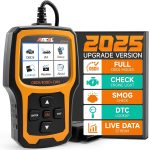
ANCEL AD410 Enhanced OBD2 Scanner, Review autozone Buying Guide – Oemiu
ANCEL AD410 Enhanced OBD2 Scanner Review: Your Guide to Automotive Diagnostics
In the ever-evolving world of automotive maintenance, understanding your vehicle’s health is no longer a luxury, but a necessity. The modern car is a complex network of sensors and systems, and when something goes wrong, it often manifests as that dreaded “Check Engine” light. While a trip to the mechanic is always an option, it can be costly and time-consuming, especially for minor issues. This is where an OBD2 scanner like the ANCEL AD410 comes into play. The ANCEL AD410 is an enhanced OBD2 scanner designed to empower car owners with the ability to diagnose and understand their vehicle’s problems right in their own driveway. It’s a device that can save you money, time, and a whole lot of frustration. This comprehensive review will delve into the features, functionality, and overall value of the ANCEL AD410, helping you determine if it’s the right tool for your automotive needs. We’ll also consider where you might purchase such a tool, including resources available such as your local autozone, ensuring you make an informed buying decision.
Decoding the Check Engine Light: The Power of OBD2 Scanners
The “Check Engine” light, officially known as the Malfunction Indicator Lamp (MIL), is your car’s way of telling you something isn’t right. It could be a minor issue like a loose gas cap, or a more serious problem like a faulty oxygen sensor or catalytic converter. Ignoring it can lead to further damage and costly repairs down the line. OBD2 (On-Board Diagnostics II) is a standardized system used in most vehicles since 1996 to monitor various aspects of the engine and emissions systems. An OBD2 scanner plugs into your car’s OBD2 port (usually located under the dashboard) and communicates with the vehicle’s computer, retrieving diagnostic trouble codes (DTCs) that indicate the nature of the problem. These codes are standardized, meaning that the same code will generally indicate the same problem across different makes and models. The ANCEL AD410 goes beyond simply reading codes. It provides a detailed description of the code, helping you understand the underlying issue. This is crucial because simply knowing the code (e.g., P0420) isn’t enough. You need to understand what that code means and what components it relates to. The AD410 also allows you to clear these codes after you’ve addressed the problem, turning off the “Check Engine” light. This can be particularly useful for diagnosing intermittent problems, as you can clear the code and see if it returns. However, it’s important to remember that clearing a code doesn’t fix the underlying problem. If the issue persists, the “Check Engine” light will eventually come back on. It’s more than just turning off a light; it’s about understanding the health of your vehicle. Many car owners consider checking at autozone when considering buying an OBD2 scanner.
ANCEL AD410: Features and Functionality in Detail
The ANCEL AD410 is packed with features designed to make automotive diagnostics accessible to both novice and experienced users. Here’s a detailed breakdown of its key capabilities:
- Reads and Clears Diagnostic Trouble Codes (DTCs): This is the core function of any OBD2 scanner. The AD410 can read both generic (P0, P2, P3, and U0) and manufacturer-specific (P1, P3, and U1) codes, providing a comprehensive diagnostic capability. It also allows you to clear these codes and turn off the “Check Engine” light.
- Displays DTC Definitions: Instead of just showing you the code, the AD410 provides a detailed description of what the code means. This is invaluable for understanding the nature of the problem and identifying potential solutions. For example, instead of just seeing “P0420,” you’ll see “Catalyst System Efficiency Below Threshold (Bank 1).”
- I/M Readiness Status: This feature checks whether your vehicle’s various emissions systems are ready for a smog test. It indicates whether the monitors responsible for checking these systems have completed their tests. This can save you time and money by preventing you from taking your car for a smog test before it’s ready.
- Live Data Stream: The AD410 can display real-time data from your vehicle’s sensors, such as engine RPM, coolant temperature, oxygen sensor readings, and more. This allows you to monitor the performance of various components and identify potential problems. This is especially useful for diagnosing intermittent issues or problems that only occur under certain conditions.
- Freeze Frame Data: When a DTC is triggered, the vehicle’s computer stores a snapshot of the sensor data at the time the code was set. This “freeze frame” data can provide valuable clues about the conditions that led to the problem. The AD410 allows you to view this freeze frame data.
- Vehicle Information (VIN, CIN, and CVN): The AD410 can retrieve important vehicle information, such as the Vehicle Identification Number (VIN), Calibration Identification Number (CIN), and Calibration Verification Number (CVN). This information can be useful for identifying the correct parts for your vehicle or for performing software updates.
- O2 Sensor Test: This feature allows you to test the performance of your vehicle’s oxygen sensors, which are crucial for proper fuel efficiency and emissions control.
- EVAP System Test: The Evaporative Emission Control System (EVAP) prevents fuel vapors from escaping into the atmosphere. The AD410 can perform an EVAP system test to check for leaks.
- Built-in DTC Lookup Library: The AD410 has a built-in library of DTC definitions, so you don’t need to look them up online. This makes it easy to quickly understand the meaning of a code.
- Multilingual Support: The AD410 supports multiple languages, including English, French, Spanish, German, and Italian.
- User-Friendly Interface: The AD410 has a large, easy-to-read LCD display and intuitive button controls, making it easy to use even for beginners.
These features combine to make the ANCEL AD410 a powerful and versatile tool for automotive diagnostics. Whether you’re a seasoned mechanic or a novice car owner, the AD410 can help you understand your vehicle’s health and save money on repairs. Comparing it to other scanners on the market, particularly those at a similar price point, reveals the ANCEL AD410’s robust feature set and ease of use stand out. It is worthwhile to see if the local autozone stocks this or similar models.
Real-World Applications: Scenarios Where the AD410 Shines
The ANCEL AD410 isn’t just a theoretical tool; it’s a practical solution for a wide range of automotive problems. Here are a few real-world scenarios where the AD410 can be invaluable:
- Diagnosing a Check Engine Light: This is the most common use case. When the “Check Engine” light comes on, the AD410 can quickly identify the problem and provide a detailed description of the code. This allows you to make an informed decision about whether to fix the problem yourself or take it to a mechanic.
- Preparing for a Smog Test: Before taking your car for a smog test, you can use the AD410 to check the I/M readiness status. This ensures that your vehicle’s emissions systems are ready for the test and prevents you from failing the test due to incomplete monitors.
- Troubleshooting Performance Issues: If your car is experiencing performance issues, such as poor fuel economy, rough idling, or hesitation, the AD410 can help you identify the underlying cause. By monitoring live data, you can see how various sensors are performing and identify potential problems.
- Preventative Maintenance: The AD410 can be used to monitor the health of your vehicle’s systems and identify potential problems before they become serious. For example, you can use it to check the performance of your oxygen sensors or test the EVAP system for leaks.
- Buying a Used Car: Before buying a used car, you can use the AD410 to check for any hidden problems. This can help you avoid buying a car with serious mechanical issues.
- DIY Repairs: If you’re comfortable working on your own car, the AD410 can be a valuable tool for diagnosing and repairing problems. By providing detailed code definitions and live data, it can help you understand the problem and identify the correct parts to replace.
Imagine you’re driving down the road and the “Check Engine” light suddenly comes on. Instead of immediately panicking and rushing to the mechanic, you can pull over (safely, of course), plug in the AD410, and quickly identify the problem. Perhaps it’s just a loose gas cap, which you can easily fix yourself. Or maybe it’s a more serious issue, but at least you’ll have a better understanding of what’s going on before you take it to the mechanic. The AD410 empowers you to take control of your car’s health and make informed decisions about its maintenance and repair. Checking online resources such as autozone may help you compare this model with similar models.
ANCEL AD410: Pros and Cons
Like any tool, the ANCEL AD410 has its strengths and weaknesses. Here’s a balanced look at its pros and cons:
| Pros | Cons |
|---|---|
|
|
The AD410 excels as a general-purpose OBD2 scanner for reading engine and emissions-related codes. Its affordability and ease of use make it an excellent choice for car owners who want to understand their vehicle’s health and save money on repairs. However, if you need to diagnose more complex problems, such as ABS or airbag issues, or if you require advanced features like bidirectional control, you may need to consider a more expensive, professional-grade scanner. For most everyday car owners, the AD410 strikes a good balance between functionality and affordability. Before purchasing, comparing prices at several locations, including autozone, is worthwhile.
Making the Purchase: Where to Find the ANCEL AD410
The ANCEL AD410 is widely available from a variety of retailers, both online and offline. Here are some common places where you can find it:
- Online Retailers: Seller, eBay, and other online retailers are a convenient source for the AD410. You can often find competitive prices and read reviews from other customers.
- Automotive Parts Stores: Many automotive parts stores, such as autozone, Advance Auto Parts, and O’Reilly Auto Parts, carry the AD410 or similar OBD2 scanners. This allows you to see the scanner in person and ask questions before you buy.
- Department Stores: Some department stores, such as Walmart and Target, also carry OBD2 scanners in their automotive sections.
When shopping for the ANCEL AD410, it’s important to compare prices from different retailers and read reviews from other customers. Also, be sure to check the retailer’s return policy in case you’re not satisfied with the product. Consider whether buying local offers advantages, such as immediate availability and easier returns, which places like autozone might provide. Remember to factor in shipping costs when comparing prices from online retailers. It’s also worth checking for any special offers or promotions that may be available. Before purchasing, make sure the scanner is compatible with your vehicle. The AD410 is compatible with most vehicles sold in the US since 1996, but it’s always a good idea to double-check. You can usually find a compatibility list on the retailer’s website or in the product description. If you’re unsure, you can contact the retailer or ANCEL’s customer support for assistance.
Frequently Asked Questions (FAQ)
What vehicles is the ANCEL AD410 compatible with?
The ANCEL AD410 is compatible with most vehicles sold in the United States since 1996 that support the OBD2 protocol. This includes cars, trucks, SUVs, and minivans. However, it’s always a good idea to double-check compatibility before purchasing. Some older vehicles or vehicles from certain manufacturers may not be fully compatible. You can usually find a compatibility list on the retailer’s website or in the product description. You can also contact the retailer or ANCEL’s customer support for assistance. To ensure compatibility, check your vehicle’s owner’s manual for confirmation of OBD2 compliance. Also consider the specific functionalities you need; while it reads basic codes on most OBD2 compliant cars, advanced features may not be supported on all models. Before heading down to your local autozone, verify whether your specific vehicle is fully supported.
Can the ANCEL AD410 diagnose ABS or airbag problems?
The ANCEL AD410 is primarily designed to diagnose engine and emissions-related problems. While it can read some ABS (Anti-lock Braking System) and airbag codes, its functionality in this area is limited and may not be supported on all vehicles. For comprehensive ABS and airbag diagnostics, you’ll typically need a more advanced and expensive scanner that supports these specific systems. These scanners often have bidirectional control capabilities, allowing you to activate and test various ABS and airbag components. If you frequently need to diagnose ABS or airbag problems, it’s worth investing in a dedicated scanner for these systems. However, for basic engine and emissions-related issues, the ANCEL AD410 is a good choice. Check the scanner’s specifications carefully to see which systems it supports before making a purchase. Consider that while you may be able to read some basic ABS codes, interpreting them accurately may require specialized knowledge. Your autozone advisor may have suggestions on scanners that support these features if needed.
How do I update the ANCEL AD410 software?
The ANCEL AD410 is typically updated via a USB connection to a computer. You’ll need to download the update software from ANCEL’s website and follow the instructions provided. The update process usually involves connecting the scanner to your computer, running the update software, and selecting the appropriate update file. It’s important to ensure that you have a stable internet connection and that your computer meets the minimum system requirements for the update software. Regular software updates can improve the scanner’s performance, add new features, and fix any bugs or issues. ANCEL typically releases updates periodically to keep the scanner up-to-date with the latest vehicle models and diagnostic protocols. It is essential to keep your scanner updated to maintain its accuracy and compatibility. Check ANCEL’s website for the latest update instructions and software. Some older models may not be upgradable; confirm this before purchasing if updates are important to you. You can often find helpful tutorials and videos online demonstrating the update process.
Is the ANCEL AD410 easy to use for beginners?
Yes, the ANCEL AD410 is generally considered to be very user-friendly, even for beginners. It has a large, easy-to-read LCD display and intuitive button controls. The scanner’s interface is designed to be simple and straightforward, making it easy to navigate the various menus and functions. The built-in DTC lookup library is also a valuable feature for beginners, as it provides detailed descriptions of the diagnostic trouble codes. The scanner also comes with a user manual that provides clear and concise instructions on how to use it. With a little practice, even someone with no prior experience using an OBD2 scanner should be able to quickly learn how to diagnose and clear basic trouble codes. The simplicity of the ANCEL AD410 makes it a popular choice for car owners who want to take control of their vehicle’s health without having to spend a lot of time learning how to use a complex diagnostic tool. Consider viewing some online tutorials for first-time OBD2 users. Checking for ease-of-use reviews is advisable prior to purchasing at your local autozone.
What does the I/M Readiness status mean?
The I/M Readiness status indicates whether your vehicle’s various emissions systems are ready for a smog test. I/M stands for Inspection and Maintenance. These systems are continuously monitored by the vehicle’s computer to ensure that they are functioning properly. Before a smog test can be performed, these monitors must complete their tests and report a “ready” status. If any of the monitors are not ready, the vehicle will fail the smog test. The ANCEL AD410 can check the I/M Readiness status and display which monitors have completed their tests and which ones are still pending. This allows you to ensure that your vehicle is ready for a smog test before taking it to the testing station. Common monitors include the catalyst monitor, the oxygen sensor monitor, and the evaporative system monitor. Factors that can prevent monitors from completing their tests include recent battery disconnection, engine repairs, or driving conditions that don’t allow the monitors to run. Allow your car to run through several drive cycles for it to reset the monitors. Knowing the I/M Readiness status can save you time and money by preventing you from failing a smog test due to incomplete monitors. Check with your local autozone for advice about this function.
Can I clear the Check Engine light with the ANCEL AD410 even if the problem still exists?
Yes, the ANCEL AD410 allows you to clear the Check Engine light even if the underlying problem still exists. However, it’s important to understand that clearing the code doesn’t fix the problem. It simply turns off the light. If the issue persists, the Check Engine light will eventually come back on. Clearing the code can be useful for diagnosing intermittent problems, as you can clear the code and see if it returns. However, it’s generally not a good idea to clear the code without first addressing the underlying problem. Ignoring a Check Engine light can lead to further damage and costly repairs down the line. It’s always best to diagnose the problem, fix it properly, and then clear the code. Think of it like taking away a symptom rather than curing a sickness; although it may turn off the light, the problem still exists in the background. If the light returns soon after being cleared, it indicates the root cause has not been resolved and you should investigate further. Therefore, even after turning off the light after checking out the available options at your local autozone, consider seeking professional repair to make sure that the problems won’t cause more serious issues in the long run.
Does the ANCEL AD410 require batteries?
No, the ANCEL AD410 does not require batteries. It draws its power directly from the vehicle’s OBD2 port. When you plug the scanner into the OBD2 port, it will automatically power on and be ready to use. This is a convenient feature, as you don’t have to worry about replacing batteries or keeping the scanner charged. The OBD2 port provides a standardized 12-volt power supply, which is sufficient to power the scanner’s electronics and display. This makes the ANCEL AD410 a truly portable and easy-to-use diagnostic tool. Since the scanner runs off the car’s power, it can only be operated while plugged into the OBD2 port. When you unplug the scanner, it will automatically power off. Check the documentation before testing at your local autozone, which may include how to manage power for specific vehicle models.
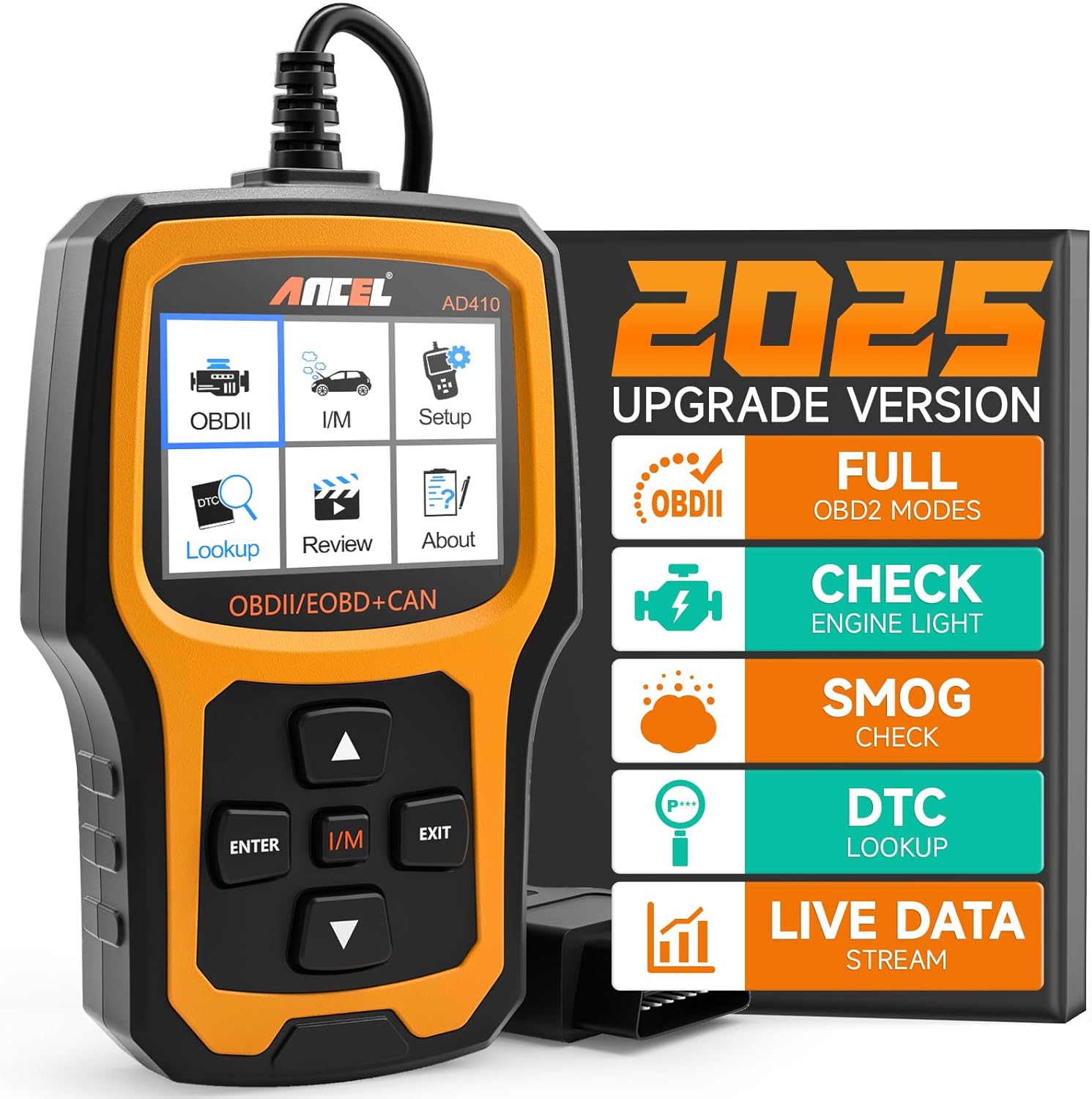
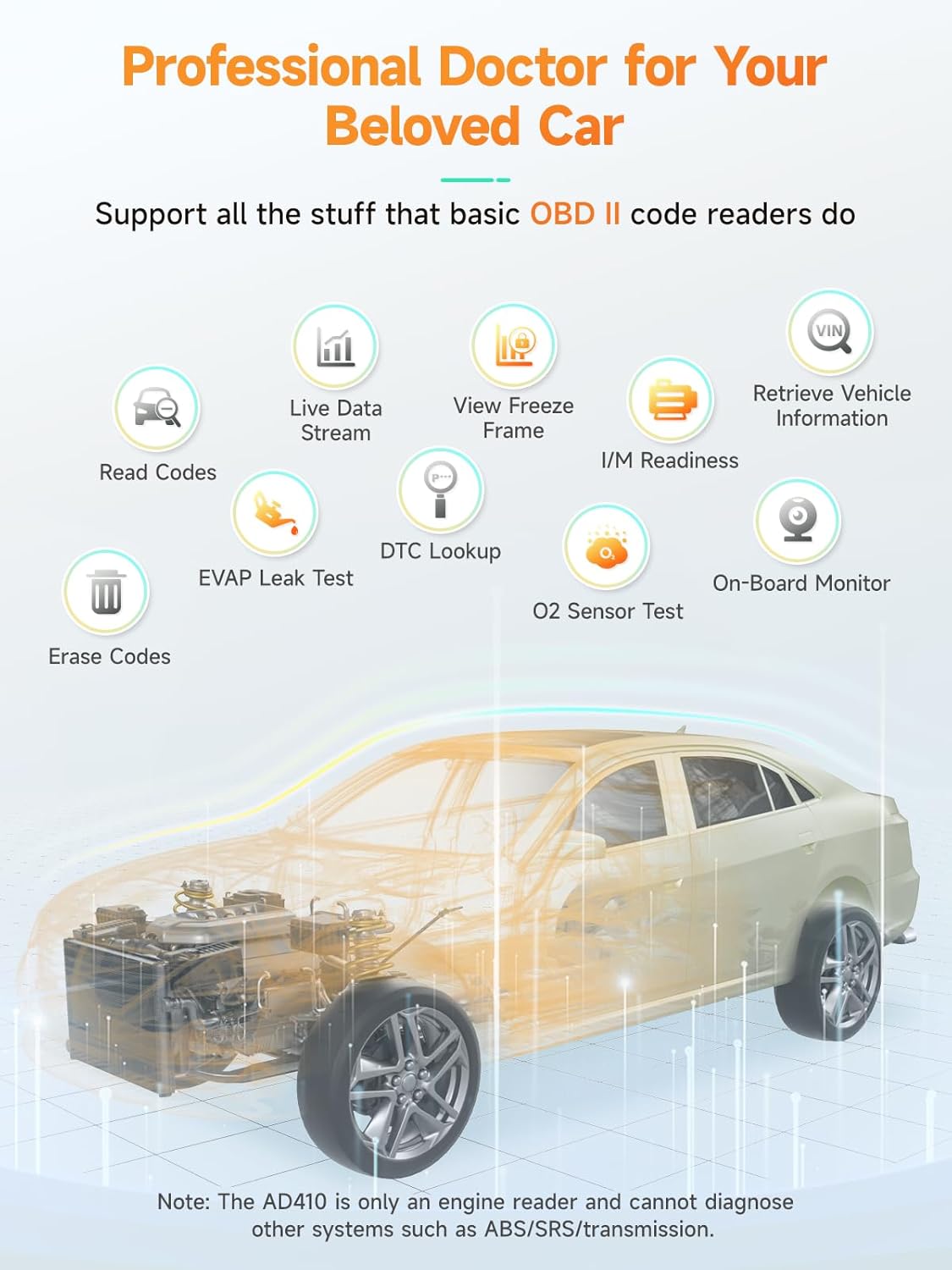
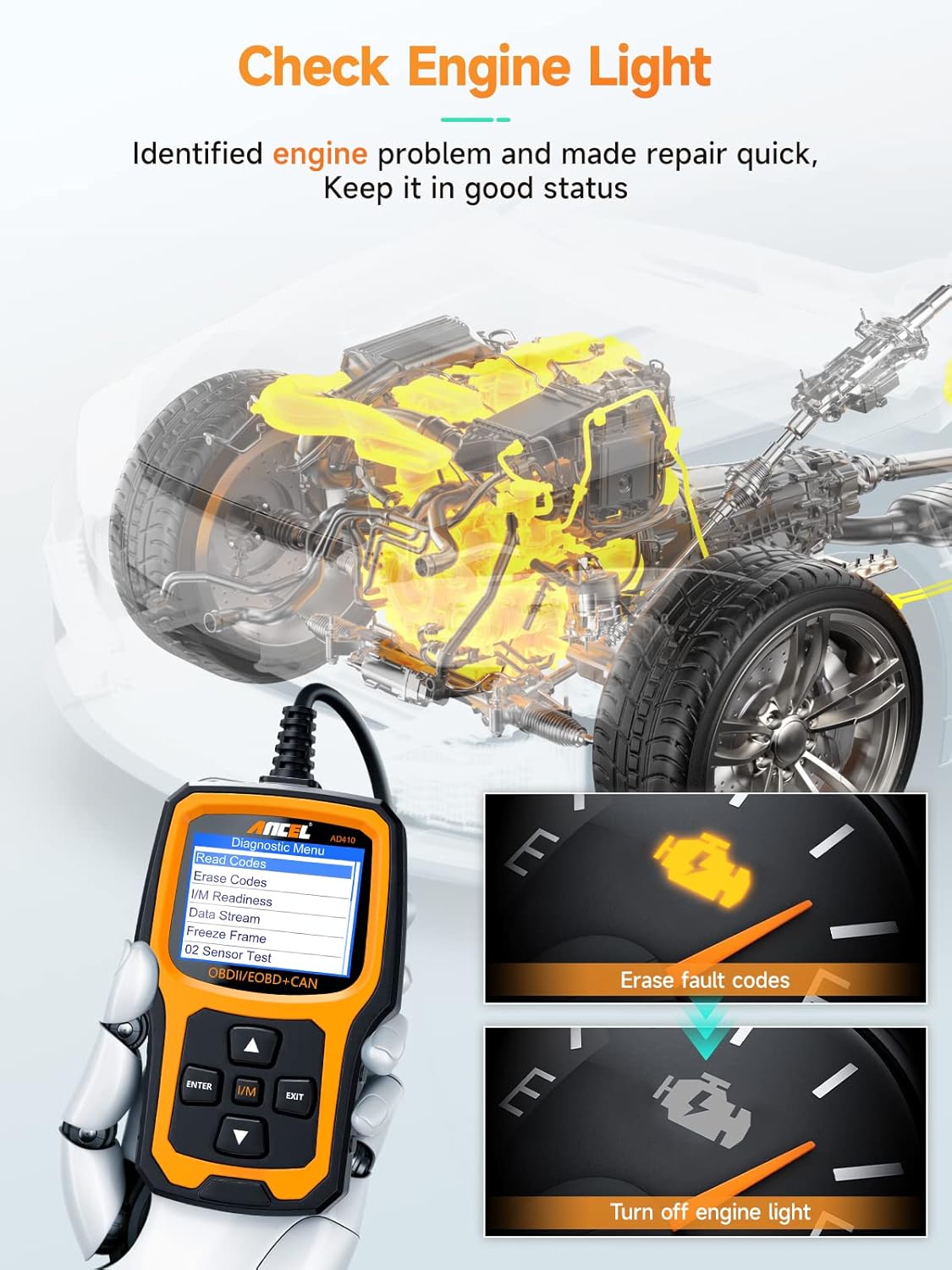
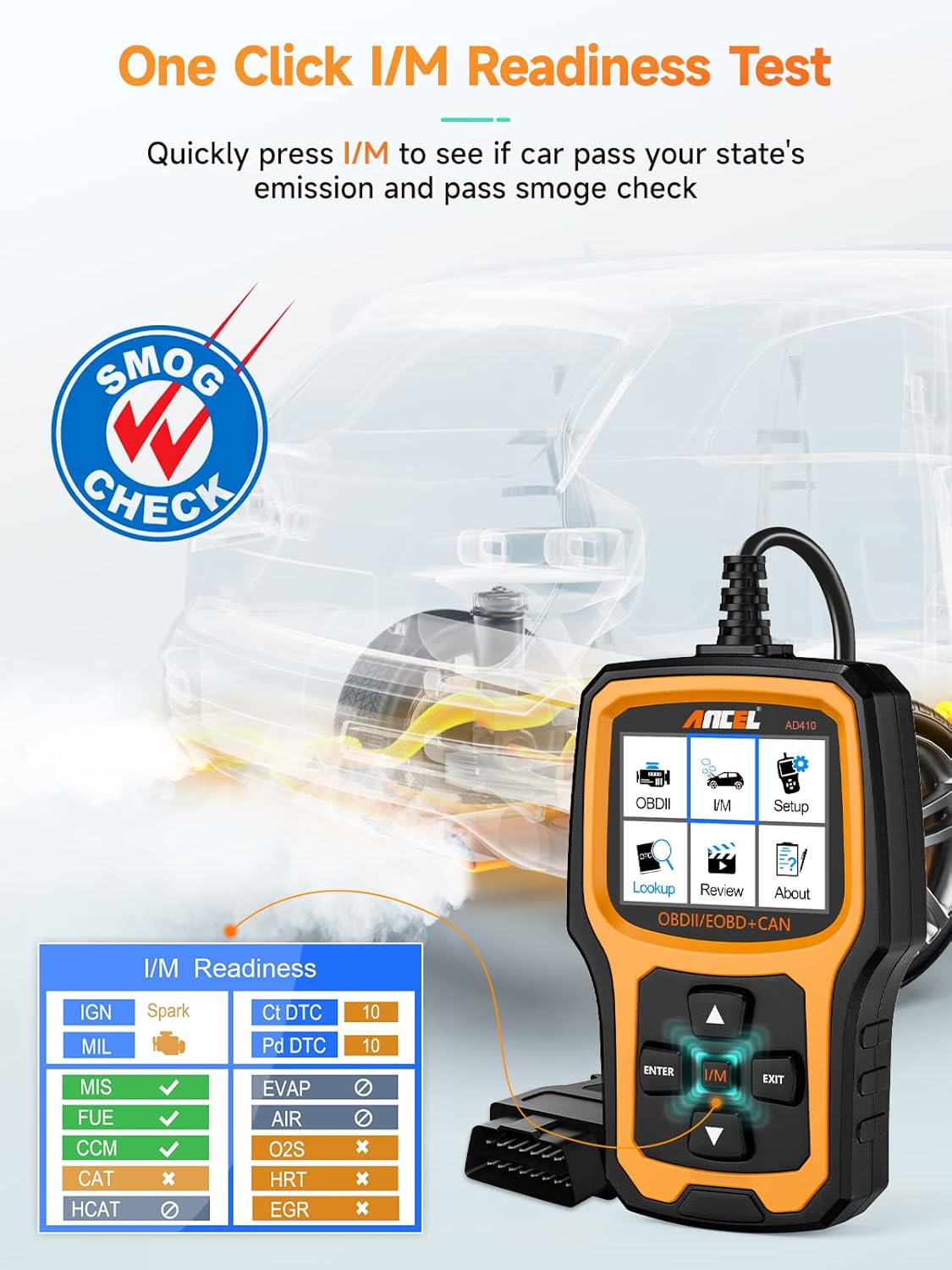
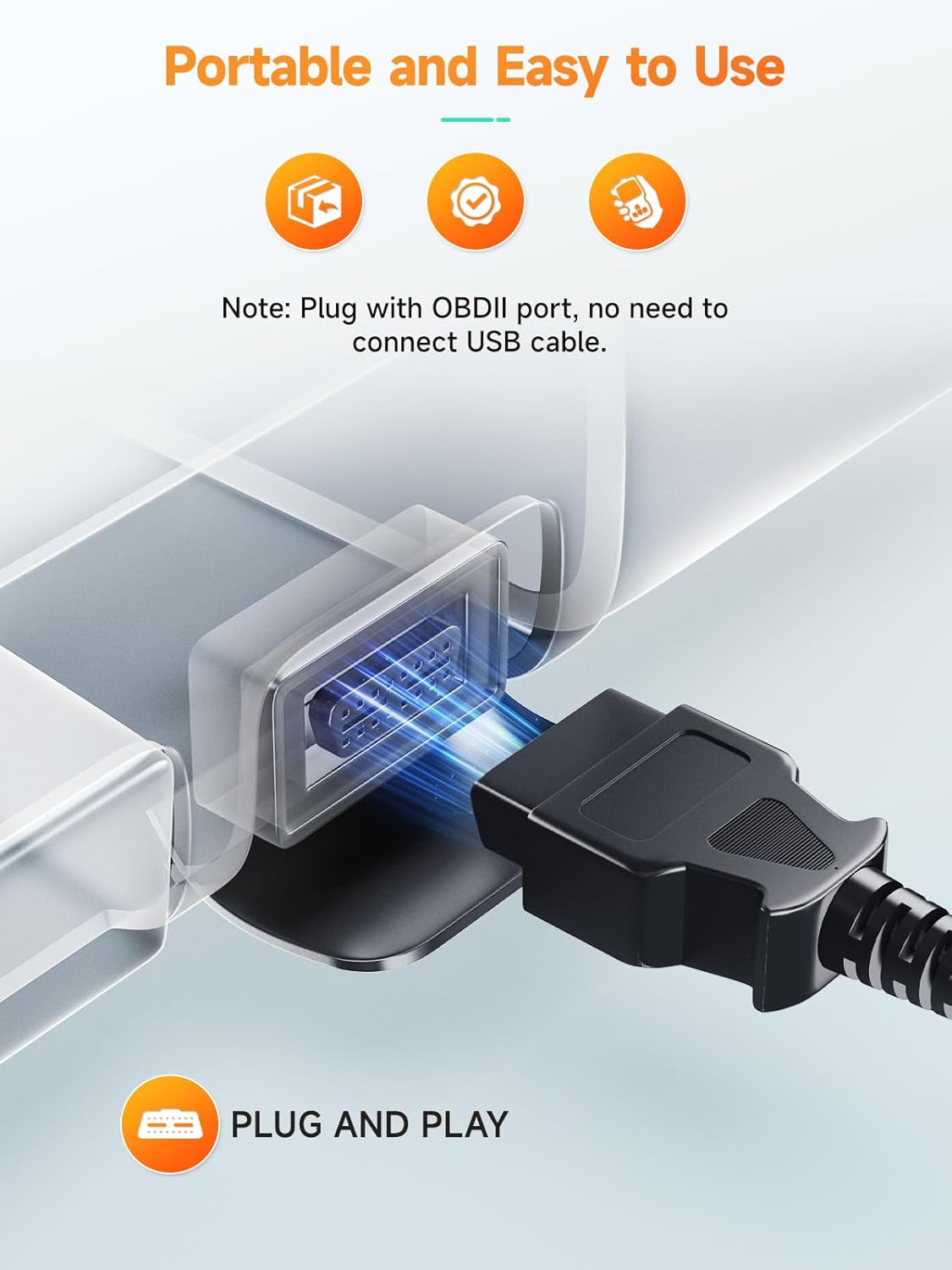
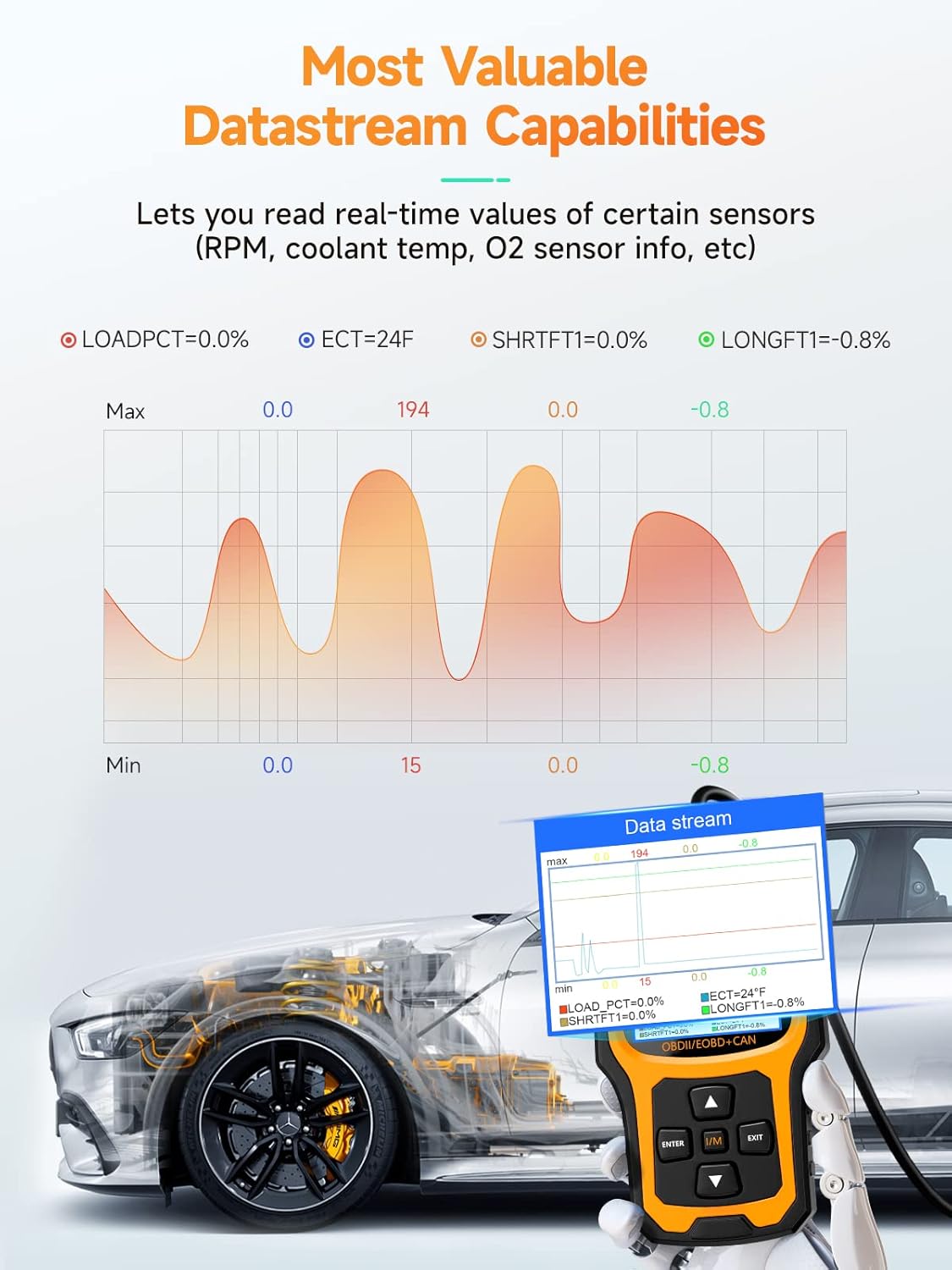

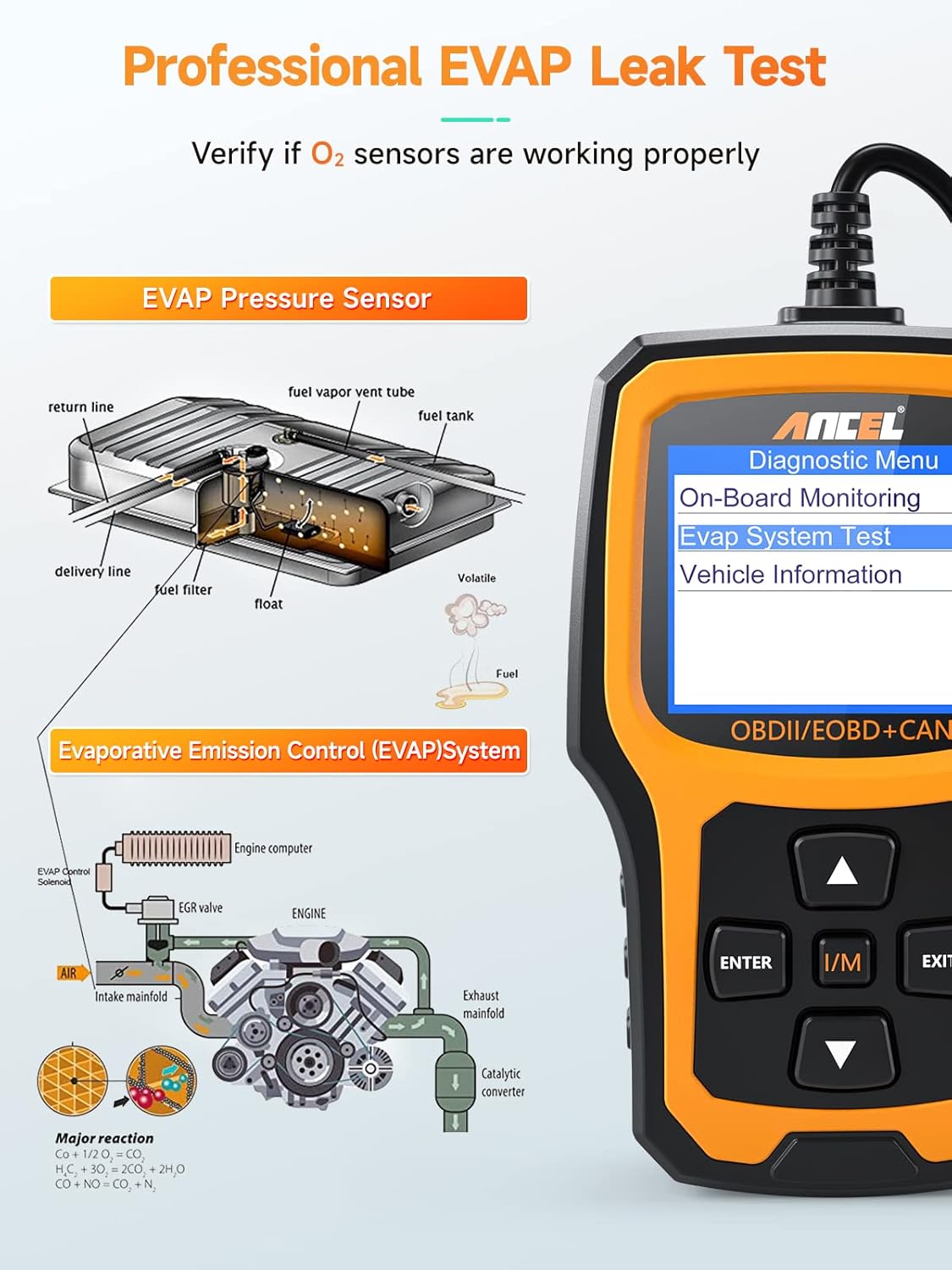

Price: $57.99 - $35.99
(as of Sep 07, 2025 09:10:26 UTC – Details)




